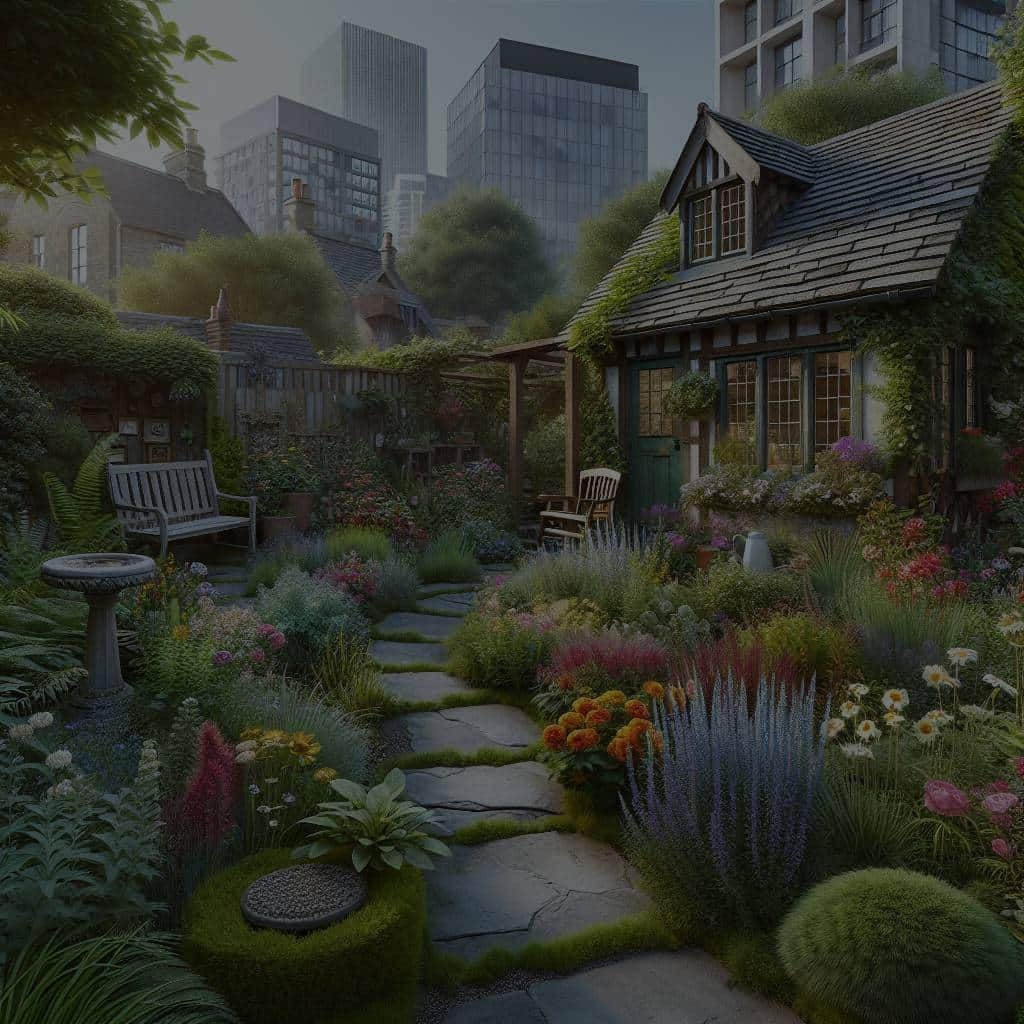You may think that creating an authentic English cottage garden is a task for those with lush green acres flanking a quaint country cottage. Yet, you’d be mistaken. Even within the confines of an urban backyard, you can craft your little haven of English charm. This article will guide you on how to transform your limited outdoor space into a verdant retreat, filled with a riot of flowers, plants and that quintessential cottage garden feel.
Understanding the English Cottage Garden Style
Before you begin planting, it’s essential to understand the charm and appeal of an English cottage garden style. These gardens are known for their informal yet enchanting design that evokes a sense of comfort and tranquility.
Also read : What’s the Best Approach to a Dog-Friendly Living Room That’s Stylish and Practical?
Cottage gardens are a delightful mix of flowers, vegetables, herbs, and ornamental plants, all jostling for attention. Despite the seeming chaos, there is an underlying harmony that creates a picturesque image. You don’t need acres of land to achieve this effect; a small space, when thoughtfully designed, can embody the same enchanting spirit.
This style is not about rigid patterns or precise arrangements. It’s about nature taking its course, with a little guidance from you. The plants in your garden will grow, spread, and mingle, creating a natural tapestry of colors and textures.
Also read : How Can You Design a Home Wine Cellar for Optimal Temperature and Humidity Control?
Choosing the Right Plants
The selection of the right plants is pivotal to establishing an authentic English cottage garden feel. Traditionally, these gardens are bursting with a variety of flowers and plants that add color, texture, and fragrance to the space.
Perennials like roses, delphiniums, foxgloves, and hollyhocks are quintessential cottage garden plants. They provide structure and color and will return year after year. Plant them towards the back of your garden beds to create a colorful backdrop.
Herbs such as lavender, sage, and thyme not only contribute fragrance and texture but also have practical uses in the kitchen. Vegetables and fruits like tomatoes, beans, and strawberries can also find a spot in your garden, emphasizing the utilitarian aspect of cottage gardens.
Remember, cottage gardens are about abundance. So, don’t be afraid to plant closely. This will create a lush, full garden and also help keep weeds under control.
Incorporating Design Elements
While the choice of plants is essential, so too are various design elements that can enhance the overall look and feel of your garden. These elements can add character and a sense of place to your urban backyard.
A picket fence, an arbor over the garden gate, or a weathered wooden bench can provide your garden with that quintessential English cottage feel. These features not only contribute to the garden’s aesthetics but also serve practical purposes. A bench, for instance, offers a place to sit and enjoy the fruits of your labor.
Pathways are another important element. In a cottage garden, paths are usually winding and made from natural materials like gravel or cobblestones. They guide visitors through the garden, offering surprises at every turn.
Creating Your Garden: Practical Tips
Now that you understand the style, have chosen your plants, and decided on design elements, it’s time to create your garden. Here are some practical tips to get started.
First, start small. It’s better to do a small area well than to overextend yourself and struggle to maintain a larger space. Remember, you can always expand as your confidence and skills grow.
Next, prepare your soil. Good soil is the lifeblood of any garden, especially a cottage garden filled with a variety of plants. Test your soil to understand its type and amend it as needed to provide a healthy environment for your plants to thrive.
Finally, remember that gardening is a process, not an event. Don’t be discouraged if your garden doesn’t look perfect right away. Plants need time to grow and fill in, and part of the joy of gardening is watching this transformation take place.
Adding the Finishing Touches
Once your garden is established, consider adding some finishing touches to elevate its charm and authenticity. Birdhouses, sundials, or a vintage watering can placed strategically can enhance the cottage garden feel.
Plant climbers like roses or ivy around your fences or arbor, they will add height and another layer of interest to the garden. Seasonal bulbs planted among perennials will ensure your garden has bursts of color throughout the year.
Remember, the goal of an English cottage garden is to create a space that feels personal, inviting, and a little whimsical. Your garden should be a reflection of you, filled with the plants and objects you love.
So, whether you have a small urban backyard or a large country estate, creating an English cottage garden is a labor of love, but the results are well worth the effort. Enjoy the process, and take credit for each bloom and fruit that your garden produces. After all, you’ve created a little slice of English heaven, right there in your own backyard.
Maintaining Your Cottage Garden: Year-Round Care
Understanding and implementing a proper maintenance plan is paramount to keeping your English cottage style garden flourishing year-round. Gardens aren’t only for summer. Each season brings its own charm and beauty, and a well-maintained garden reflects this.
In spring, prepare your garden beds by removing any dead leaves or plant material, turning the soil, and adding compost for nutrition. This is also the time to plant any new additions to your garden, ensuring they have ample time to establish before the summer heat.
Summer is the time when your garden will be at its most vibrant. Regular watering is necessary in this season, especially for new plants. You’ll also need to stay on top of weed control. However, remember that a cottage garden is not about perfection. A few weeds here and there add to the natural, informal look of the garden.
In fall, consider adding fruit trees to your garden. Apple or pear trees can contribute to the charm and provide a wonderful harvest. This is also the time to prune your plants in readiness for winter.
Finally, winter is a time for rest, both for you and the garden. But that doesn’t mean neglecting your plants. Winter care usually involves protecting your plants from frost, especially those not native to colder temperatures.
Remember, maintaining a garden is a continuous process, not a one-time task. The efforts you put into your garden will reward you with a beautiful, low maintenance landscape year-round.
Conclusion: Your Own Quaint English Heaven
Creating an English cottage garden in an urban backyard might seem like a daunting task. However, with the right blend of plants, design elements, and regular care, you can transform your space into a quaint little slice of English heaven.
Your garden will be a reflection of your personality and style. Whether it’s the colorful riot of flowers, the scent of fresh herbs, or the weathered wooden bench, each element contributes to your garden’s unique charm.
Remember that gardening is a labor of love. It might require hard work and patience, but the rewards are immense. Each bloom, each fruit, each image credit to your efforts is a testament to your dedication. Watching your garden transform over the seasons, being part of the process, and seeing your designs come to life are among the most fulfilling aspects of gardening.
So, whether you’re a seasoned gardener or a beginner, don’t be afraid to get your hands dirty. Start small, learn as you go, and most importantly, have fun with it. After all, creating an English cottage garden is all about expressing yourself and creating a space that brings you joy.
So don your gardening gloves, pick up your tools, and create your own piece of English serenity right in the heart of the city. Your English cottage garden awaits!






